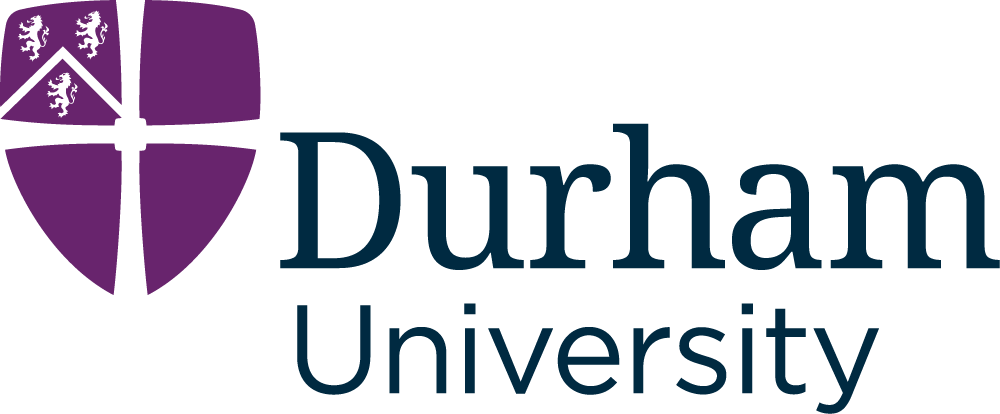

Analysis & Geometry Day @ Durham, UK
20 March 2024


Analysis & Geometry Day @ Durham, UK
20 March 2024
This will be a mini-workshop gathering analysts and geometers working in problems of geometric flavour, infused by techniques rooted in the theory of optimal transportation. This event will include talks given by senior researchers as well as PhD students.
This will be a fully in person event.
All are welcome to attend!
Venues: the morning talks will take place in MCS0001 (Scott Logic lecture theatre); the afternoon talks will take place in PH30.
In this talk, I will discuss how one can generalize calculus in Euclidean space to singular spaces. In particular, I will present, first, how one can define the notion of a differential on singular spaces, such as Alexandrov spaces. Then I will discuss the notion of regular points of semiconcave functions and the proof of Perelman's fibration theorem. If time permits, I will also discuss some applications and new recent results extending the stability theorem to the equivariant setting.
The optimal transport theory has been used to model several phenomena both within mathematics and in other fields and is currently a very active area of research. In this talk, we will delve into a geometric aspect of this theory, specifically concerning the symmetries of Wasserstein spaces.
More precisely, given a real number $p\in [1,\infty)$ and a metric space $(X,d)$, the $p$-Wasserstein space over $X$ is the space $\mathbb{P}_p(X)$ consisting of Borel probability measures on $X$ with finite $p$-moment, endowed with the distance function induced by solving the optimal transport problem with the cost function $c(x,y)=d(x,y)^p$. We say that $X$ is isometrically rigid with respect to the $p$-Wasserstein distance if the group of isometries of $\mathbb{P}_p(X)$ is isomorphic to the group of isometries of $X$.
In general, determining if $X$ is isometrically rigid with respect to the $p$-Wasserstein distance heavily relies on the geometry of $X$ and the value of $p$. In this talk, I will give an overview of this topic, and I will present work in progress joint with Fernando Galaz-García, Martin Kerin, and Jaime Santos-Rodríguez.
The goal of this talk is to provide sharp spectral gap estimates for problems involving higher-order operators (including both the clamped and buckling plate problems) on Cartan-Hadamard manifolds. The proofs are symmetrization-free -- thus no sharp isoperimetric inequality is needed -- based on two general, yet elementary functional inequalities. The spectral gap estimate for clamped plates solves a sharp asymptotic problem from Cheng and Yang [Proc. Amer. Math. Soc., 2011] concerning the behavior of higher-order eigenvalues on hyperbolic spaces, and answers a question raised in Kristály [Adv. Math., 2020] on the validity of such sharp estimates in high-dimensional Cartan-Hadamard manifolds. As a byproduct of the general functional inequalities, various Rellich inequalities are established in the same geometric setting.
The Myers–Steenrod theorem states that the isometry group of a Riemannian $n$-manifold is a Lie group whose dimension is at most $n(n + 1)/2$. When the manifold is compact, its isometry group must also be compact, as established by van Dantzig and van der Waerden.
The application of the theory of compact transformation groups in Riemannian geometry is grounded on these two fundamental results, which also hold for other classes of metric spaces, such as Alexandrov spaces or RCD spaces.
Singular Riemannian foliations represent a generalized notion of symmetry on Riemannian manifolds and generalize both isometric compact Lie group actions and Riemannian submersions, which induce decompositions into embedded submanifolds of lower dimension. Not all singular Riemannian foliations stem from Lie group actions, though.
Nevertheless, certain isometries of a Riemannian manifold M with a singular Riemannian foliation F may induce residual symmetry by preserving the foliation’s leaves. These foliated isometries generate isometries of the leaf space $M/F$. In this talk, I will discuss an analogue of the Myers–Steenrod theorem for the group of foliated isometries of a Riemannian manifold with a singular Riemannian foliation and extensions to the case of Alexandrov spaces. This is joint work with Diego Corro (Cardiff University).
The talk is focused on the fundamental tone of clamped plates, a problem initially formulated by Lord Rayleigh in 1877, and solved by M. Ashbaugh & R. Benguria (Duke Math. J., 1995) and N. Nadirashvili (Arch. Ration. Mech. Anal., 1995) in 2 and 3 dimensional euclidean spaces. We consider the same problem on both negatively and positively curved spaces, and provide various answers depending on the curvature, dimension and the size of the clamped plate.
Following the introduction of displacement convexity by R. J McCann (Advances in Mathematics ’97), various stronger notions of convexity on the Wasserstein space have since been introduced. In this talk, I will introduce three notions of convexity on the Wasserstein space and provide some examples of convex functions in each instance. Subsequently, I will discuss when these notions of convexity coincide.
The Dyson Brownian motion (DMB) is a system of infinitely many interacting Brownian motions with logarithmic interaction potential, which was introduced by Freeman Dyson '62 in relation to the random matrix theory. In this talk, we reveal that an infinite-dimensional differential structure induced by the DBM has a Bakry-Émery lower Ricci curvature bound. As an application, we show that the DBM can be realised as the unique Wasserstein-type gradient flow of the Boltzmann-Shannon entropy associated with sine_beta ensemble.
| TIME | ||
| SPEAKER | ||
| 9h00-10h00 | Kristály | |
| 10h00-10h30 | break | |
| 10h30-11h30 | Suzuki | |
| 11h30-12h00 | Parker | |
| 12h00-13h30 | lunch on your own | |
| 13h30-14h00 | Al Attar | |
| 14h00-15h00 | Farkas | |
| 15h00-15h30 | break | |
| 15h30-16h00 | Che Moguel | |
| 16h00-17h00 | Galaz-García |
Organiser: Alpár R. Mészáros.
Scientific committee: Fernando Galaz-García, Martin Kerin, Alpár R. Mészáros, Kohei Suzuki.
If you have any questions please contact us.